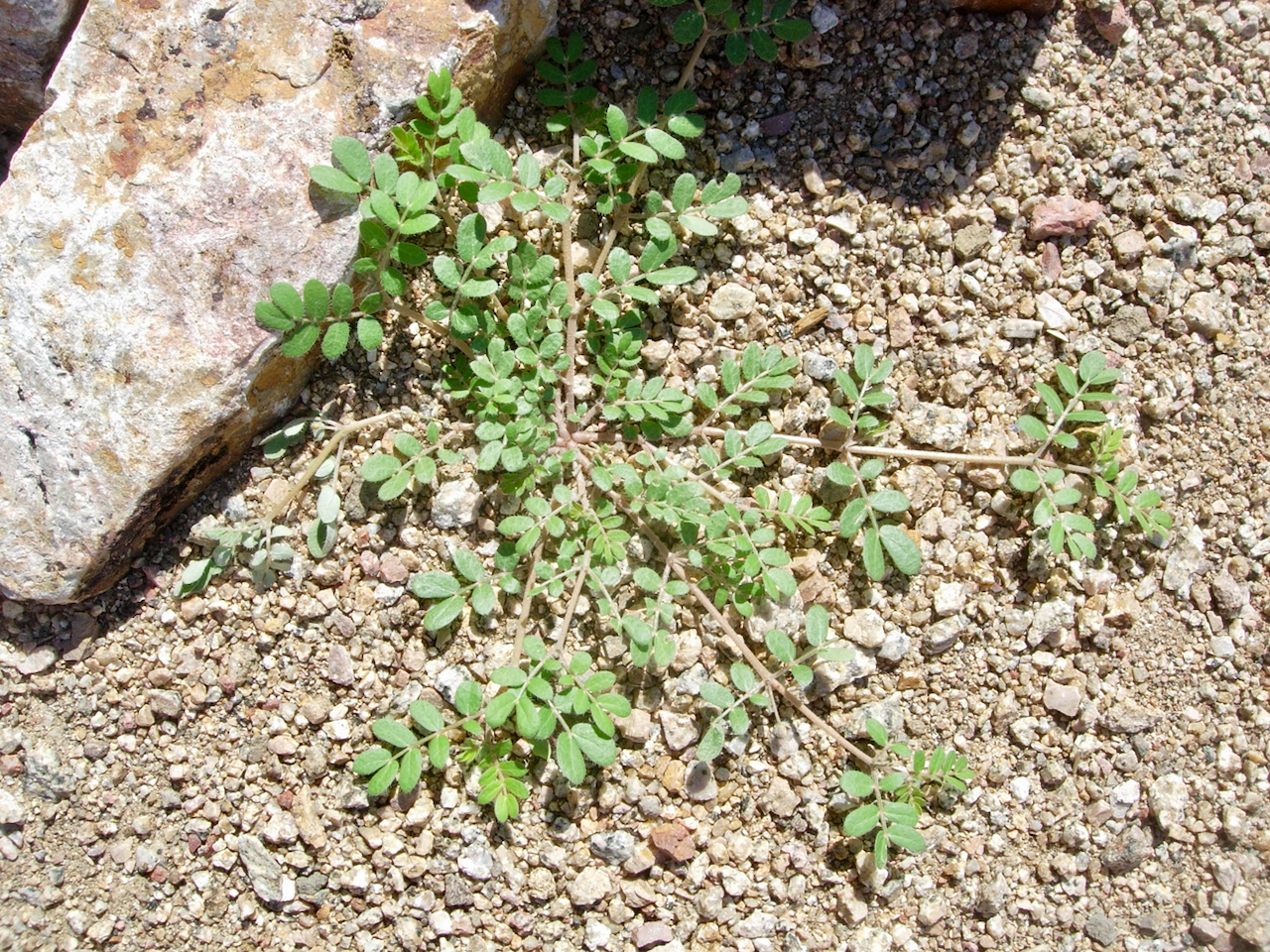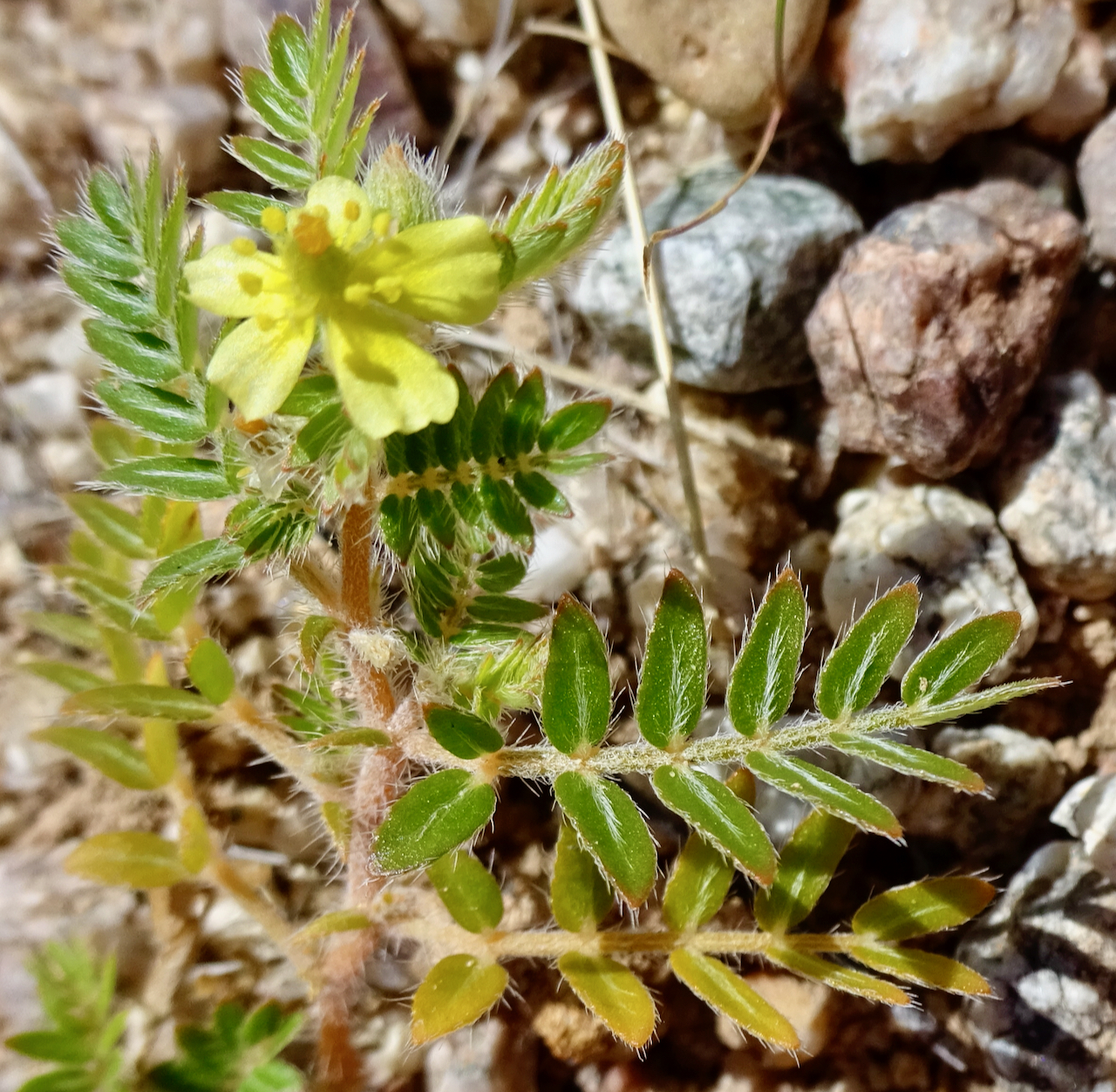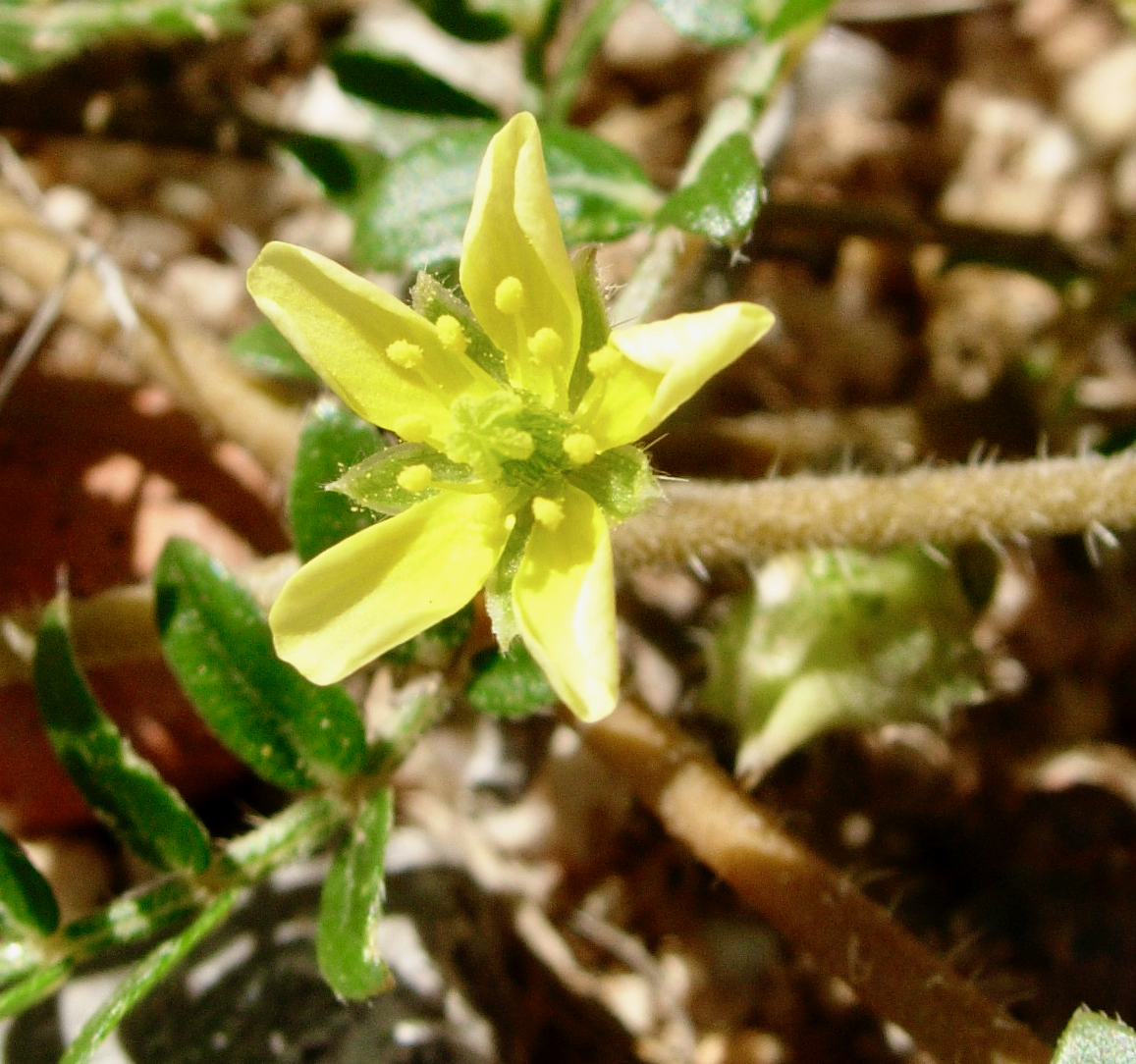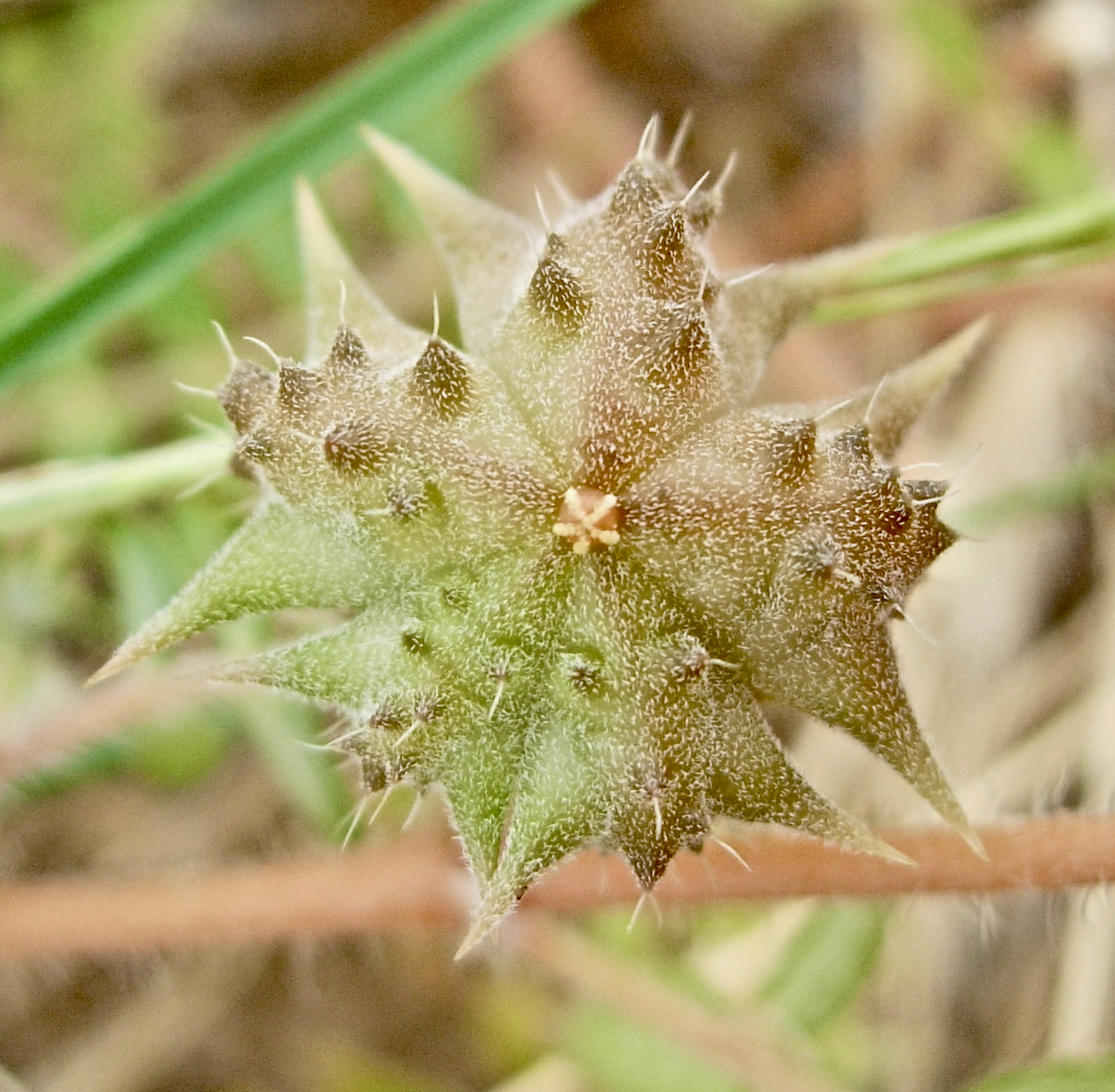Puncturevine
Tribulus terrestris
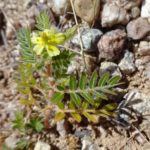
About the Plant
This plant is an ARIZONA NOXIOUS WEED!
Puncturevine has been a pest since its introduction into the US in the early 1900s. It competes with farm crops and poisons livestock. The spiny fruit is dangerous to the feet of all animals, including humans, and can injure the mouths and digestive tracks of animals who eat it. The spines on the fruit are hard and sharp enough to puncture the tires of bicycles, lawn mowers, and other small equipment.
In our area, puncturevine begins to grow with the summer monsoon rains. You'll probably notice it as a mat of foliage covering the ground, though the flowers are noticeable, too. It is an annual, so the plant will not regrow if it is dug out of the ground. Make sure to pick up any fruit that fall to the ground. The seeds will germinate in the next 2-5 years, so any area where puncturevine was found should be monitored for several years and any new plants removed.
Wildlife value: none
More Information
Map of distribution in US (light blue indicates plant is present and not native; pink indicates states in which plant is considered noxious)
Technical Botanical Description from SEINet
